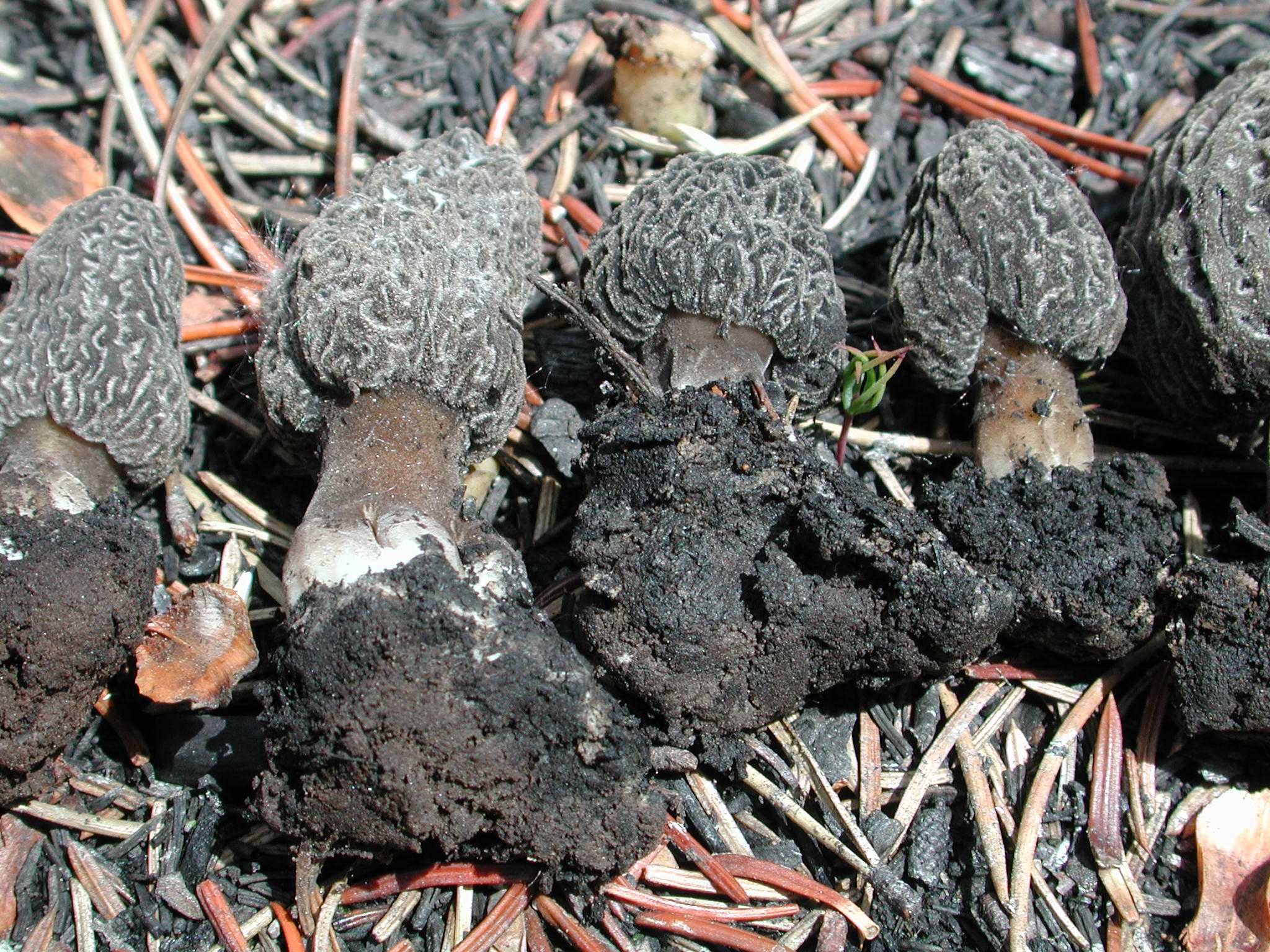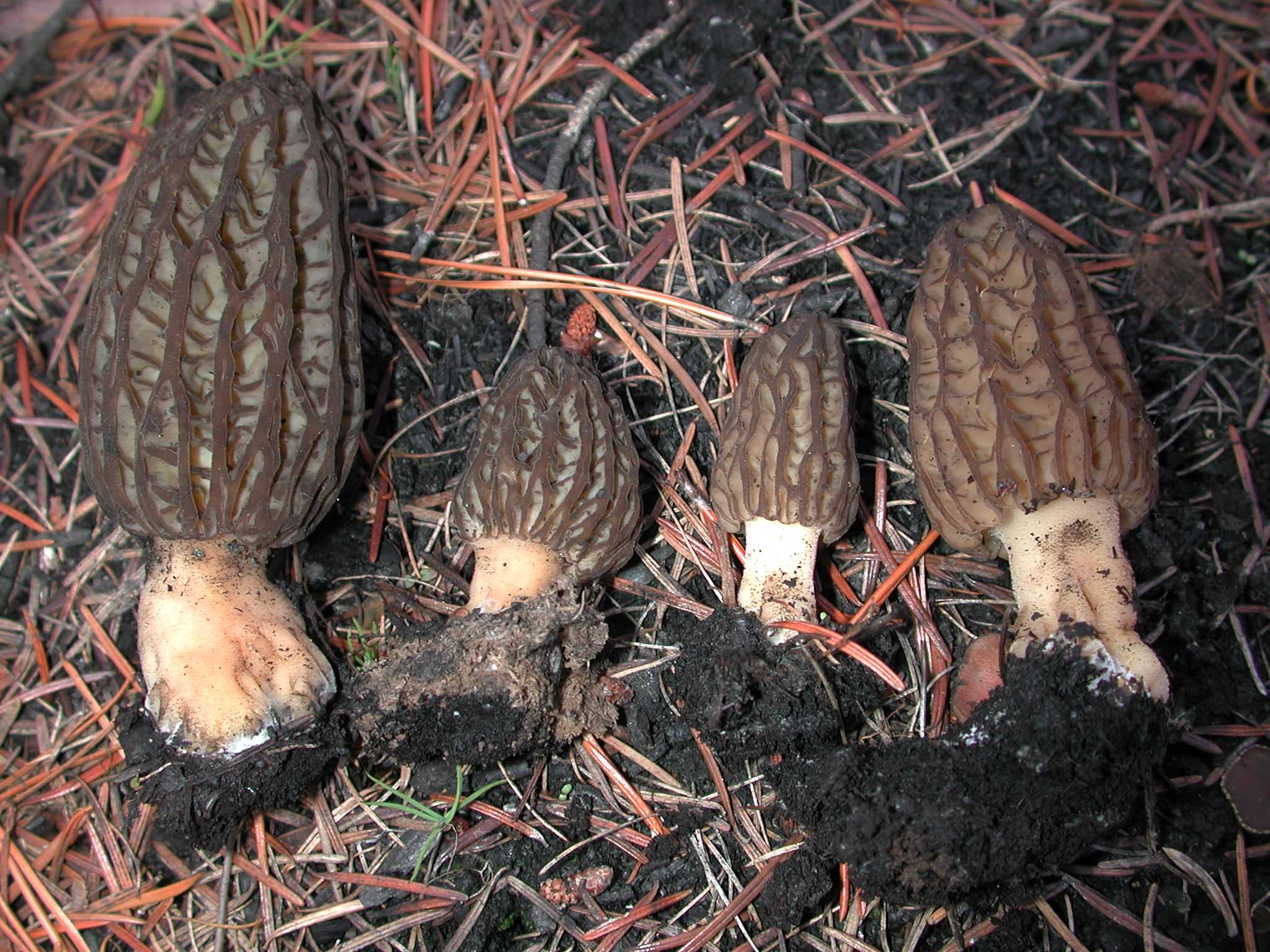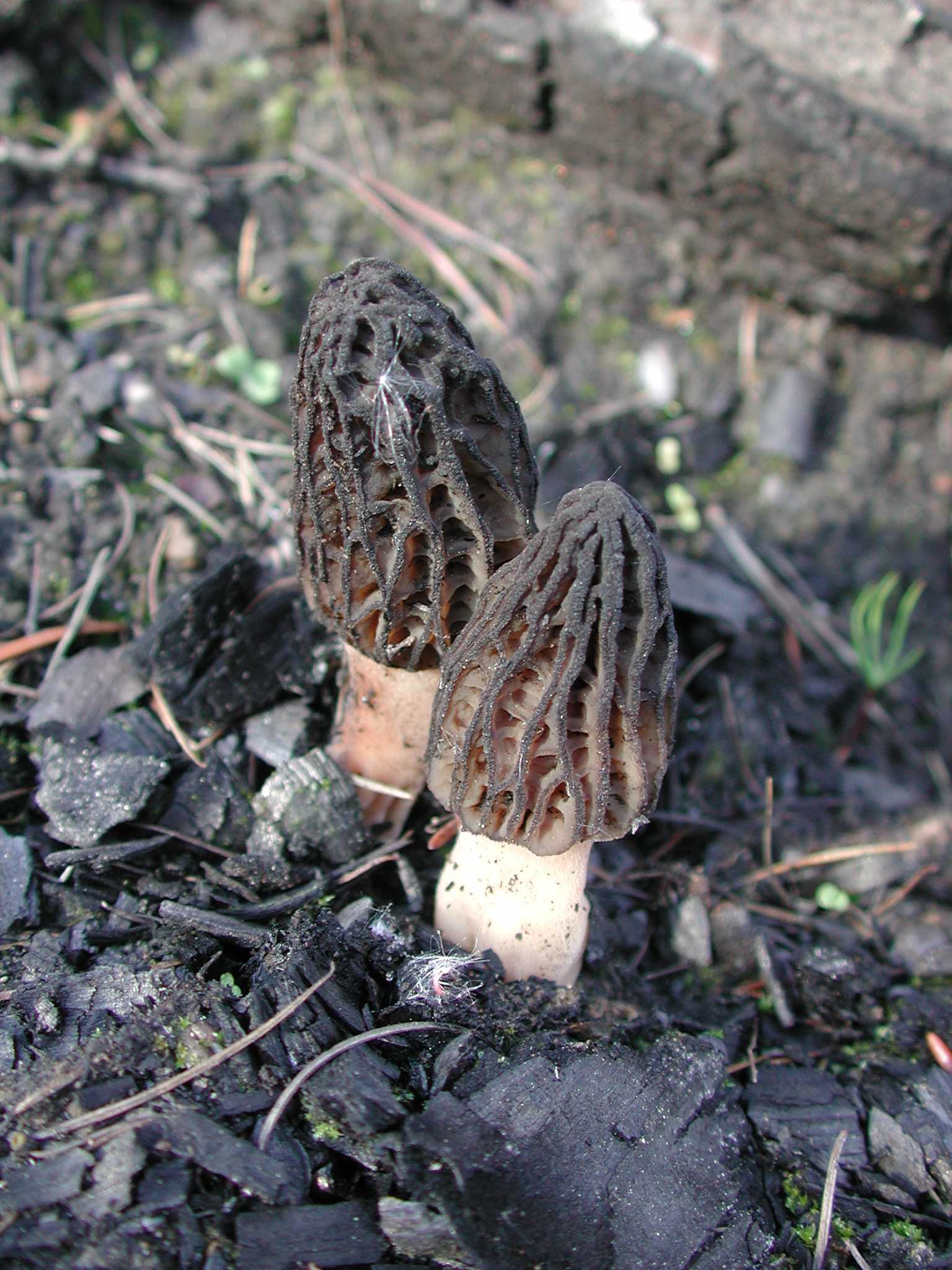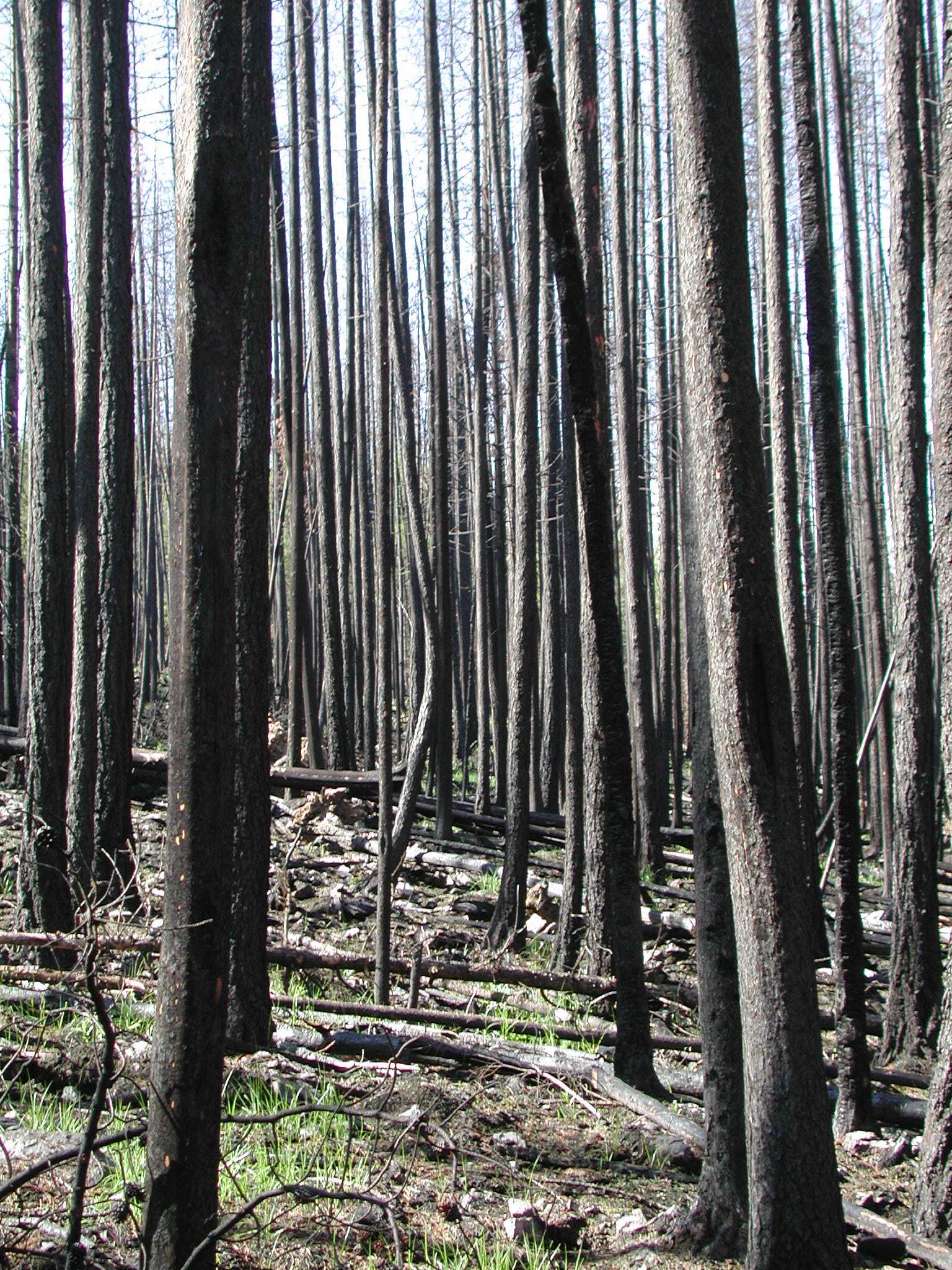Mushroom picking
A guide to picking morel mushrooms in wildfire-affected areas.
On this page
When a wildfire moves through a forested area, a significant amount of tree cover and other vegetation can be burned away, leaving the soil exposed. Under these conditions, wild mushrooms (including fire morels) may be among the first organisms to reappear in fire-damaged areas.
Although individuals and commercial picking operations are allowed to harvest mushrooms on Crown land, everyone who does so must comply with applicable legislation related to the use of Crown land and respect the rights of private property owners, First Nations and other stakeholders in affected areas.
- Picking mushrooms in wildfire-affected areas factsheet (PDF, 323KB)
- More information about plants and fungi in British Columbia
Closures
Notice is hereby given that the McTaggart-Cowan/nsək'łniw't Wildlife Management Area, located in the traditional territory of the syilx people, is
- Closed to mushroom picking, camping and motor vehicle use throughout
- Closed to public access within the Christie Mountain Fire burn perimeter effective May 11, 2021 by order made under the authority of section 7(4) of the Wildlife Act ([RSBC 1996] CHAPTER 488). This order aims to reduce impacts to wildlife habitat and cultural values within the WMA as a result of public use. Penticton Indian Band and the Province are working collaboratively to assess and monitor public use in the WMA following the wildfire.
Public use of forested areas on Crown land
A forest is not merely a stand of trees; it also incorporates the ecosystem in which those trees grow. Important components of that ecosystem include climate conditions, soil, vegetation, animals and microorganisms.
About 95 percent of British Columbia’s forested areas are publicly owned, with the majority of those areas designated as Crown forests, provincial parks or protected areas. Individuals have specified rights to use or travel on public land, but they are also subject to certain laws. For example, it’s illegal to litter or to build unauthorized trails on provincial Crown land.
Anyone who uses public land needs to respect British Columbia’s forests and take responsibility for their own safety while in those areas.
Mushroom biology
One of the essential components of a forest ecosystem is the presence of mushrooms. They decompose organic matter, provide food for animals and can even help plants grow.
Mushrooms are the “fruit” of a fungus that lives unseen in the soil, the duff (the layer of plant material and leaf litter that often covers a forest floor) or on living or dead trees. This unseen, thread-like network is called a mycelium. In the case of many mushrooms, the mycelium is interconnected with the roots of a living tree.
If conditions are right, the mycelium produces spore-bearing bodies (mushrooms) each year. The spores produced by the mushrooms germinate in the soil when conditions are favourable and will establish new mycelia in the forest.
Picking mushrooms
Mushroom pickers are encouraged to tread carefully in areas where mushrooms are growing, leave over-mature mushrooms behind, and not pick mushrooms in sensitive ecosystems or forest reserves.
When harvesting mushrooms, it’s important to not harm the mycelium that produces the mushrooms. If it’s not damaged and conditions are favourable, the fire morel fungus may produce a new crop of mushrooms after the first crop is harvested.
Mushroom picking is allowed on provincial Crown land without a permit, but it’s illegal to pick mushrooms in a provincial or national park. On private land, pickers must get permission from the property owner to access the land and harvest mushrooms from it.
Permission to pick mushrooms is required:
- On leased public land
- On private land
- On First Nations reserve lands
Mushroom picking is not allowed:
- In national or provincial parks
- In Conservation Lands, including Wildlife Management Areas
- On Department of National Defence lands (federal)
- In protected areas, such as ecological reserves or special reserves
- In recreation areas, including provincial recreation sites and trails
- In areas specifically closed to protect sensitive resource values or for the purposes of public safety
Anyone planning to pick mushrooms in burned areas this year is strongly advised to learn where the boundaries of provincial parks, federal parks and First Nations reserves are, to avoid picking mushrooms in restricted areas or inadvertently wandering into areas where permission is required to pick them.
Pickers should familiarize themselves with the locations of First Nations traditional territories and reserves.
Mapping applications are available at the following links:
Morel mushrooms and wildfires
Crown land may be closed to mushroom picking or other activities at any time in order to address safety issues or other concerns. Anyone planning to pick mushrooms is strongly advised to check with the local FrontCounter BC office to see if access to the specific area they wish to enter has been closed. You can call FrontCounter BC toll-free at 1-877-855-3222. Or find a FrontCounter BC office
Wherever a wildfire has occurred, morel mushrooms often appear the following spring in that location. At the provincial scale, the greater the area of forest burned, the greater the production of fire morels. However, at the local scale, this pattern also depends on other factors (including weather conditions).
It’s therefore impossible to make accurate predictions about whether mushrooms will appear in a particular burned area or how productive the crop will be.
There are several species of fire morels in British Columbia, including Morchella tomentosa (gray fire morel), Morchella sextelata (pink fire morel) and Morchella septimelata (green fire morel) — as well as morel relatives with which they might be confused: Gyromitra esculenta (false morel) and Verpa bohemica (false early morel).
Harvesting mushrooms: tips and precautions
Poisonous mushrooms grow in B.C. and they can cause sickness or death if they’re eaten. Anyone who picks mushrooms should have the knowledge necessary to correctly identify both edible and poisonous varieties. They should do their research carefully or go picking with an educated professional.
Mushrooms should not be eaten raw. Morels, in particular, contain a volatile toxin that dissipates through drying or cooking, but will cause gastrointestinal problems if the morels are eaten raw. Some morel look-alikes can also cause gastric distress in some people (e.g. the Gyromitra species).
Harvesting tips:
- When harvesting morel mushrooms, cut the stem above the ground. Do not pull or tear the mushroom out of the ground. This leaves the dirt in the forest instead of transferring the dirt to your collecting container
- Do not disturb the soil surface, since doing so can harm the mycelium (the underground, thread-like network that produces the mushrooms)
- Only pick mushrooms that you will actually use. Broken and overmature morels may continue to spread their reproductive spores if they’re left untouched
- Confirm the mushroom’s identity with an experienced harvester, buyer or biologist
- “Care taken today means mushroom crops tomorrow.
Resources:
Public safety in areas burned by wildfires
Anyone travelling in wildfire-affected areas or harvesting mushrooms in those areas is strongly encouraged to stay alert and watch out for potential safety risks, including water runoff, floods, landslides, rockfalls, danger trees and damaged infrastructure (roads, bridges, drainage culverts, etc.).
Here’s some important safety advice:
- A burned forest may contain many known and unknown hazards. For example, trees that have been badly damaged or whose roots have been burned (“danger trees”) could topple at any time, especially in windy conditions
- Where a tree has burned right down to the roots, the resulting “ash pit” may be difficult to spot and could cause an injury
- Watch out for falling treetops and branches, debris flows, mudslides, unstable roads, and barbed wire from fences that were consumed by fire
- Warning signs and other types of public notices may be damaged or missing in fire-affected areas, so exercise caution at all times
- Timber salvaging and landscape rehabilitation activities may be underway in burned areas. Members of the public must not enter areas where heavy equipment is operating or salvaging activities are taking place without the operator’s permission
- Aerial seeding is often used to rehabilitate burned areas. Please avoid these sites, since they are extremely sensitive and need time to recover
Resources:
Road use and vehicle access
- When travelling on forest service roads in British Columbia, stay alert and exercise caution at all times
- Public roads within burned areas may be temporarily “deactivated” to restrict vehicle access and reduce potential environmental concerns. This work may include cross-ditching, the placement of barriers and the removal of culverts, making the road impassable even for four-wheel-drive vehicles
- A road may be deactivated due to safety concerns, to prevent erosion or to protect streams and wildlife habitat
- The Province discourages all vehicle traffic on these roads to allow landscape rehabilitation to continue uninterrupted
- Driving on a deactivated road can be extremely dangerous
- Remember that roads in burned areas that have not been deactivated may have logging operations underway nearby and a variety of vehicles will be using them. Watch out for logging trucks at all times. Due to their size and lack of manoeuvrability, they have the right of way on forest service roads
- Watch out for road hazards and industrial traffic. Drive with your headlights on at all times. Obey all signs, but be aware that not all hazards are identified by signs
- Make sure that your activities do not affect water management structures such as water bars or cross ditches, which are used to prevent erosion on sloped roads. These structures help protect the environment and if they are damaged or altered, adjacent areas could be threatened by mudslides or flooding
- Road conditions may change rapidly. You may find that a road you expected to be open is instead deactivated, difficult to negotiate or otherwise impassable.
- The presence of a gate on a road often indicates that the road is on private land. Public roads may also be gated if the road is unsafe (e.g. due to fallen trees, a damaged bridge, etc.) or access may be restricted to help protect wildlife. Usually, a sign will be posted to explain why a public road is closed
- Any gates used to control livestock are to be left as you found them
- Anyone wishing to gain access to a particular area by travelling across private land must get permission from the landowner to do so
- Operators of off-road vehicles (ORVs) should familiarize themselves with the regulatory requirements in British Columbia’s Off-Road Vehicle Management Framework. More information is available online at: Off Road Vehicles
- For more information about resource road safety or to view current forest service road closures in your area, visit: Resource Road Safety Information
Camping
- Camping within burned forest areas is not advisable, due to potential safety hazards
- Campers must respect private property. Always ask the landowner for permission if you wish to camp on private land
- Recreation Sites and Trails B.C. campsites are to be used for recreational camping only, not to conduct a commercial business
- Wildfires can affect provincial parks and access to some parks may be restricted due to wildfire activity. To find out which parks are closed or have access restrictions in place, check the BC Parks website
- When camping on Crown land, remember the following:
- “If you pack it in, pack it out!”
- Food and garbage can attract animals. Store all food and garbage well away from your camp and be sure to take your waste with you when you leave
- Never cut down a live tree without authorization. If campfires are allowed in the area where you are, only use dead or fallen wood for firewood. Stay clear of trees marked with “wildlife tree” signs
- Always leave your campsite clean, safe and sanitary
Resources:
Fire prevention
On average, about 40 percent of the wildfires that occur each year are caused by people. A carelessly discarded match or an escaped campfire can easily cause a wildfire that could threaten people, animals, communities, infrastructure and natural resources. Sparks generated by vehicles or other equipment can also start a wildfire.
For information about wildfire hazards, fire prevention, fire use prohibitions, campfire bans or current wildfire conditions, call the 1-888-3FOREST fire information line or visit the BC Wildfire Service website.
Everyone has a stake in keeping B.C.’s public forests healthy and keeping our public forests safe is everyone’s responsibility.
- Report any suspicious activities or environmental damage to local authorities or the RCMP
- To report a wildfire, call 1-800-663-5555 toll-free or *5555 from a cellphone
- Report natural resource violations by calling 1-877-952-7277 toll-free or #7277 on most cellular networks. You can also submit a report online

Grey fire morels often appear in greater-than-normal quantities in areas where wildfires have occurred.

Green fire morels (left) and pink fire morels (right) are two species of wild mushrooms commonly seen in burned areas.

Anyone who picks mushrooms should have the knowledge necessary to correctly identify both edible and poisonous varieties.

Where a wildfire has burned a forest, mushrooms often appear the following spring.
